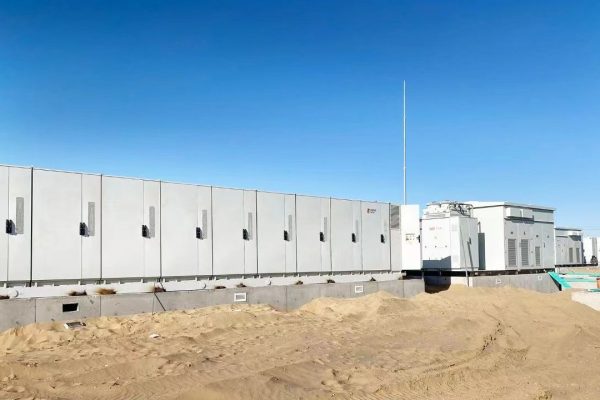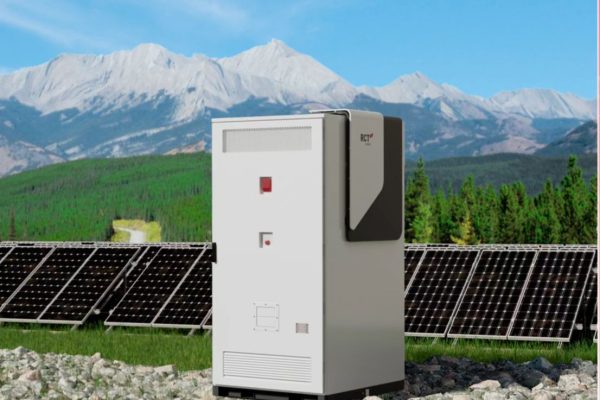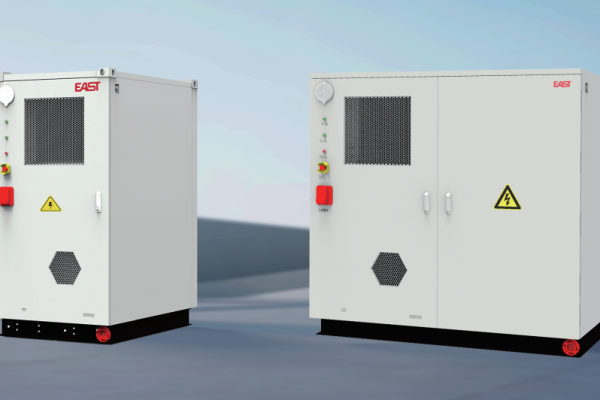How Real Project Stories Strengthen Trust with Global Buyers
In today’s competitive energy storage and renewable energy market, technical capability alone isn’t enough to win overseas buyers. What truly convinces decision-makers is proof — real projects that show your solutions performing reliably in the field.
That’s where case studies come in.
A well-written case study demonstrates engineering expertise, quality assurance, and customer value, making it one of the most powerful marketing tools for energy storage manufacturers, system integrators, and EPC contractors.
1. Why Case Studies Matter in the Energy Storage Business
When international buyers research suppliers, they ask:
- “Have you done similar projects before?”
- “How reliable are your inverters or battery systems in real environments?”
- “Can your system operate under our grid standards and climate?”
A good case study answers these questions with evidence instead of promises.
✅ Key Reasons Case Studies Build Credibility:
- Demonstrate field experience — showing real installations and data
- Show performance stability — proving your technology works beyond the lab
- Highlight application versatility — rooftop, microgrid, telecom, EV charging, etc.
- Build emotional trust — buyers relate better to success stories than to spec sheets
In short: case studies turn technical knowledge into confidence.
2. What Makes a Strong Case Study
A case study should be both technically detailed and story-driven.
Buyers are engineers and project managers — they want to see numbers, but also results.
Key Elements of an Effective Case Study
| Section | Purpose | Example |
|---|---|---|
| Project Overview | Context and objectives | “A 250 kWh solar + storage microgrid in Kenya” |
| Customer Pain Points | What problem needed solving | “Unstable grid and high diesel cost” |
| Solution Provided | What system you delivered | “Hybrid inverter with 200 kWh LFP cabinet” |
| Implementation Details | How you integrated and commissioned it | “Completed in 12 days using modular BESS cabinets” |
| Results and Data | Actual outcomes | “Reduced fuel use by 60%, ROI in 2.8 years” |
| Customer Feedback | Human testimonial | “The system has been running 24/7 without failure.” |
3. Step-by-Step: How to Build a Professional Case Study
🧩 Step 1: Choose the Right Project
Select a case that represents your core strengths:
- Advanced product performance (e.g., high-efficiency inverter)
- Challenging environment (e.g., off-grid, high temperature)
- Notable client or recognizable application (e.g., telecom operator, mining site)
Even small projects can make great stories if they solve a clear technical challenge.
⚙️ Step 2: Gather Technical Data
Buyers value real numbers — not marketing adjectives.
Collect:
- System capacity (kW / kWh)
- Battery type and brand
- Inverter model and configuration
- Installation duration
- Operating temperature or environmental data
- Energy savings or uptime statistics
If possible, include graphs or screenshots from monitoring platforms showing SOC curves, power output, or load performance.
💬 Step 3: Obtain Client Consent and Quotes
Always request permission before publishing client data.
A short quote from the end-user adds authenticity:
“The hybrid system significantly improved power reliability for our cold storage facility.”
🧠 Step 4: Focus on Problem–Solution–Result
Structure each story around this simple formula:
Problem → Solution → Result
Example:
- Problem: Unstable grid caused equipment downtime.
- Solution: Installed 100 kW hybrid inverter with 200 kWh LFP battery.
- Result: 99.8% uptime and 35% cost reduction in the first year.
🌍 Step 5: Localize for Target Markets
If you export globally, prepare versions tailored to:
- Africa / Middle East: Focus on off-grid and hybrid diesel replacement
- Europe: Highlight CE compliance, smart grid integration
- Southeast Asia: Emphasize reliability in high humidity and temperature
Localization shows you understand the client’s market and standards.
4. Types of Case Studies for Energy Storage Companies
🔋 4.1 Utility-Scale Energy Storage
- Scale: >1 MWh containerized BESS
- Focus: Grid support, peak shaving, renewable integration
- Highlight: SCADA connection, cooling system, UL/IEC compliance
🏢 4.2 Commercial & Industrial (C&I) Systems
- Scale: 100–500 kWh
- Focus: Demand charge reduction, backup power, PV self-consumption
- Highlight: ROI, power continuity, intelligent EMS
🏕️ 4.3 Off-Grid & Microgrid Projects
- Scale: 30–200 kWh
- Focus: Diesel reduction, 24/7 uptime, hybrid inverter control
- Highlight: Remote operation, weather resistance
🏠 4.4 Residential Energy Storage
- Scale: 5–15 kWh
- Focus: Backup for households, rooftop PV optimization
- Highlight: Safety, ease of installation, app control
📡 4.5 Telecom and Infrastructure
- Scale: 10–100 kWh
- Focus: Reliability in high-temperature regions
- Highlight: LFP performance, remote monitoring uptime
5. Using Visuals to Strengthen Credibility
Case studies with visuals perform 3x better in LinkedIn and website engagement.
Include:
- High-resolution installation photos
- Infographics showing system layout
- Data screenshots from your EMS platform
- Logos (with client consent)
These visuals reinforce that your work is real, measurable, and professional.
6. SEO Optimization for Case Studies
When published on your website or LinkedIn, make sure the content is optimized to attract global buyers.
Use Relevant Keywords
Examples:
- energy storage project case study
- hybrid inverter installation
- LFP battery system performance
- microgrid success story
Add Metadata and Tags
- Project location (e.g., “Solar + Storage in Nigeria”)
- System capacity (kWh, kW)
- Application sector (telecom, C&I, residential)
Link Internally
At the end of each case study, link to:
- Product pages (inverter, cabinet, battery)
- Related blog posts (installation tips, QC procedures)
- Contact form or quote request page
7. How Case Studies Support the Sales Process
Case studies are more than marketing content — they are sales tools.
They help your sales team:
- Answer buyer objections (“Has your system worked in similar climates?”)
- Provide technical validation during RFQs
- Differentiate your brand from low-cost competitors
- Shorten decision cycles by offering proof of performance
8. Turning Case Studies into Multi-Channel Assets
Each case study can be repurposed for multiple uses:
| Platform | Format | Purpose |
|---|---|---|
| Short summary + photo | Brand awareness | |
| Website Blog | Full technical article | SEO + credibility |
| PDF Brochure | Visual layout | Sales material |
| Email Campaign | Case of the month | Lead nurturing |
| Trade Shows | Printed handout | Buyer proof of experience |
This maximizes ROI on your content creation efforts.
9. Common Mistakes to Avoid
❌ Overuse of marketing language without technical data
❌ Missing or vague system specifications
❌ Using stock images instead of real project photos
❌ Lack of structure (no problem–solution–result flow)
❌ Ignoring confidentiality or client approval
Buyers can easily detect vague or generic stories — authenticity is everything.
10. How Many Case Studies Do You Need?
Start with at least 3–5 detailed case studies across different applications:
- One utility-scale project
- One C&I installation
- One off-grid or microgrid system
- One residential or telecom backup case
As your portfolio grows, update regularly — recent projects signal active business operations.
11. Example Outline for a Strong Case Study
Title: 200 kWh Solar + Storage Microgrid in Rural Philippines
Background:
Local community relied on diesel generators for power.
Challenge:
High fuel cost, maintenance downtime, and carbon emissions.
Solution:
Supplied two hybrid inverters (50 kW each) with 200 kWh LiFePO₄ battery storage. Integrated with PV array via MPPT charge controllers.
Implementation:
System installed within 10 days; remotely monitored via cloud EMS.
Results:
- Reduced diesel usage by 68%
- Achieved 99.9% uptime over 6 months
- ROI within 3 years
Client Feedback:
“The system exceeded our expectations — it’s stable and easy to monitor remotely.”
In the fast-growing energy storage industry, trust is earned through results — and case studies are the most direct way to show those results.
By documenting your real projects with clear data, visuals, and client outcomes, you position your brand as a technically capable, transparent, and reliable partner.
Every successful installation tells a story — and every story builds your technical credibility for the next deal.









